Abstract 7/8/2021
Table of content
Karol Kłosowski – Bus feeder lines to railroads as a means of integrating, developing and increasing the accessibility of public transport
Batorski Miłosz – Autonomous vehicles in urban collective transport
Grzegorz Chruścicki – Analysis of the impact of the pandemic situation on the index evaluation of the urban public transport system in Rzeszów
Edyta Boratyńska – Karpiej, Paweł Engel – Innovation in transport projects financed from the European funds
Yevhen Aloshynskyi, Jan Gertz – Possibilities of railway participation in the formation of tourist logistics clusters
Daniel Kapica – Indicator evaluation of public transport system in Zielona Góra
Abstracts
Karol Kłosowski
Bus feeder lines to railroads as a means of integrating, developing and increasing the accessibility of public transport
Abstract: The article discusses the issues of integration of transport services, i.e. passenger rail and bus services. Integration of different modes of transport is one of the priority tasks related to satisfying the constantly growing (although disturbed by the SARS-CoV-2 pandemic) demand for transport services. Integration of transport systems is seen as a complex process, affecting the conditions of competition and competitiveness of transport. The article analyzes examples of practices, experiences and plans of various entities in four provinces (i.e., Łódź, Małopolska, Mazowieckie and Pomorskie provinces). The analysis shows that these solutions effectively contribute to the improvement of transport accessibility in individual regions. In the Świętokrzyskie and Kujawsko-Pomorskie Voivodships, on the other hand, such solutions are in the planning stage and their aim is to provide public transportation in areas excluded from transport – primarily due to the absence or liquidation of railroad lines, discontinuation of service by rail carriers, and liquidation of services provided in the past by PKS companies (Motor Transport Companies).
Key words: passenger transport, public transport, feeder lines
Batorski Miłosz
Autonomous vehicles in urban collective transport
Abstract: The idea of autonomous vehicles is becoming more popular among car drivers and passengers. The increased interest can also be observed among various collective transport units. This article analyzes definition of vehicle autonomy as well as its history, development and future of the AV idea. The levels of vehicle autonomy have been presented and explained. A common fear of AV, human habits and expectations have also been discussed . Some example solutions from Poland and all around the world (both in use and of pilotage) have been listed. Apart from that both vehicle steering mechanisms and example systems used in AV were briefly presented. The problems f standing in the way of the popularization the AV idea and new possibilities that autonomos vehicles bring were also described. The article focuses also on advantages and disadvantages of the potential common use of autonomous vehicles.
Key words: urban transport, collective transport, autonomous vehicle
Grzegorz Chruścicki
Analysis of the impact of the pandemic situation on the index evaluation of the urban public transport system in Rzeszów
Abstract: The aim of the analysis was to measure to what extent the pandemic situation influenced the index assessment of the urban transport system in Rzeszów. The data used in the study come from the source database of the Integrated Management System of the Public Transport Authority in Rzeszów. Its spatial scope covers the area of Rzeszów and suburban towns covered by Rzeszów public transport in the period of four weeks of October in the years 2019-2020. The analysis shows a definite decrease in the daily number of passengers transported with a non-significant decrease in the performed vehicle kilometers. Reduced car traffic and the adjustment of timetables within the inter-stop times resulted in improved punctuality of bus services. Determinants of these effects include the introduction of remote learning and working, limited or no access to goods and services, and a negative public transport narrative. Achieving the pre-pandemic indicators will be possible as a result of a reorganization of the transport offer, a change in ticket tariffs to include a suburban bus operator, and the continuation of rolling stock renewal. All described actions should be preceded by a wide public campaign promoting urban public transport.
Key words: urban transport system, index assessment, pandemic situation
Edyta Boratyńska – Karpiej, Paweł Engel
Innovation in transport projects financed from the European funds
Abstract: The article presents the issue of innovations in transport projects co-financed from the European Union funds. The authors point to changes in attitudes towards new technologies since Poland’s accession to the European Union and raise about the role of innovation in investment programs to be implemented in the coming years.
Key words: innovation, financing, European Union, transport
Yevhen Aloshynskyi, Jan Gertz
Possibilities of railway participation in the formation of tourist logistics clusters
Abstract: In 2020-2021, the COVID-19 coronavirus and the introduction of quarantine measures had serious consequences that led to a problem in global and local tourism. An analysis of the epidemic’s consequences for the European and Polish tourism industry was conducted. To solve the problem of the decline in Polish tourism, organizational measures were proposed to stabilize the negative impact on the activities of small and medium-sized enterprises and transform Poland into a tourism beneficiary. In order to obtain additional sources of profit, it was proposed to create tourist clusters, in which the key function is to increase the level of logistic mobility of potential customers of tourist services. By passenger traffic forecasting, the purposefulness of the participation of railways in the formation of tourist logistics clusters was proved.
Keywords: rail transport, coronavirus, tourism, cluster, traffic forecasting
Daniel Kapica
Indicator evaluation of public transport system in Zielona Góra
Abstract: Indicator evaluation of public transport system is useful tool for assessment of the system and comparison with other systems. Objective measures can be also compared with fixed standards or past performances. Indicator evaluation of public transport system is used for ensuring continuous improving efficiency and quality of the transport services. . The aim of this paper was to make the first index-based assessment of the public transport system in Zielona Góra. The article discusses the spatial, demographic and organizational conditions of the public transport system functions in the city. The sources from which data should be obtained for system evaluation and the aspects that should be subject to evaluation are presented. Next, using the methodology proposed by Z. Bryniarska and W. Starowicz, an index-based evaluation of the city’s public transport system was carried out by determining its spatial and demographic accessibility, analysing the size and method of transport work, calculating and visualising passenger flows, and identifying peak hours. The data was obtained from the system operator – Municipal Transport Company in Zielona Góra (Miejski Zakład Komunikacji w Zielonej Górze) – data of 2018.
The assessment showed that there were 0.73 stops per 1 km2, and the average radius of access to a stop was equal to 440 meters. The system was used by 60 thousand passengers per day and over 17 million per year. The section with the most passengers (nearly 1/3 of the total) was identified. Two weekday traffic peaks (morning and afternoon) were identified, as well as peak periods on Saturdays and Sundays. Average speed, travel time and travel distance were typical of systems in cities of similar size.
The presented indicators should be a reference for the evaluations carried out in the following years, allowing to easily identify aspects that need to be improved in order to increase its efficiency and attractiveness.
Key words: public collective transport, passenger transport, transport system evaluation, evaluation indicators

 SITKRP
SITKRP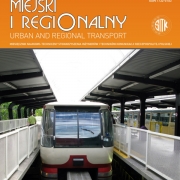 SITK RP
SITK RP 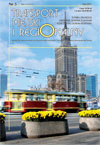 SITK RP
SITK RP 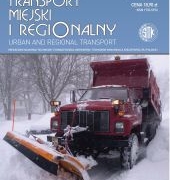 SITK RP
SITK RP 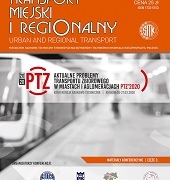
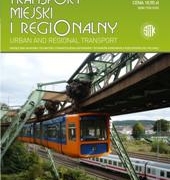 SITK RP
SITK RP 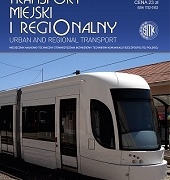


 SITK RP
SITK RP